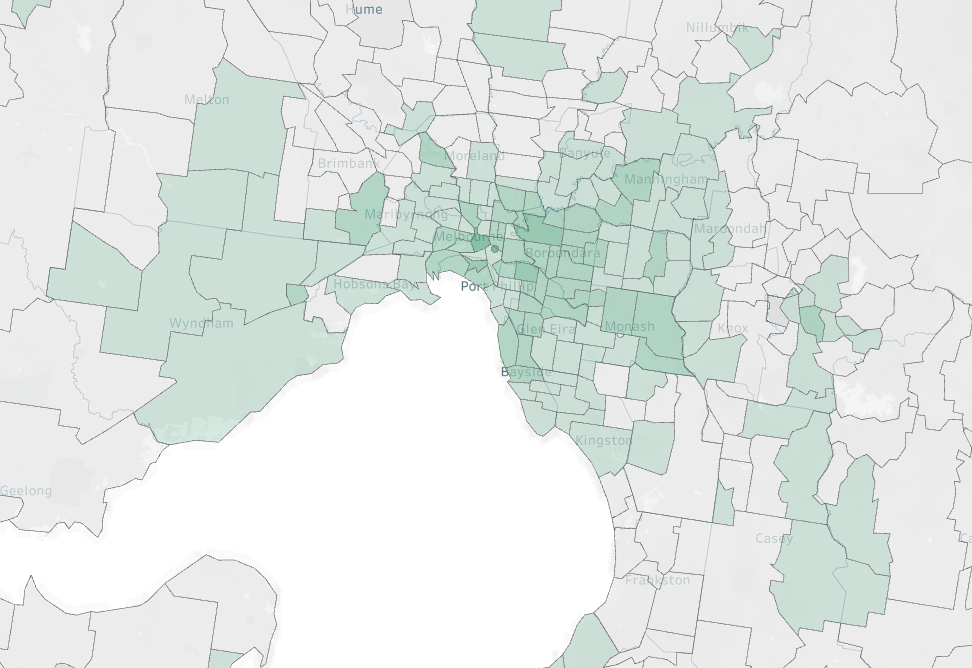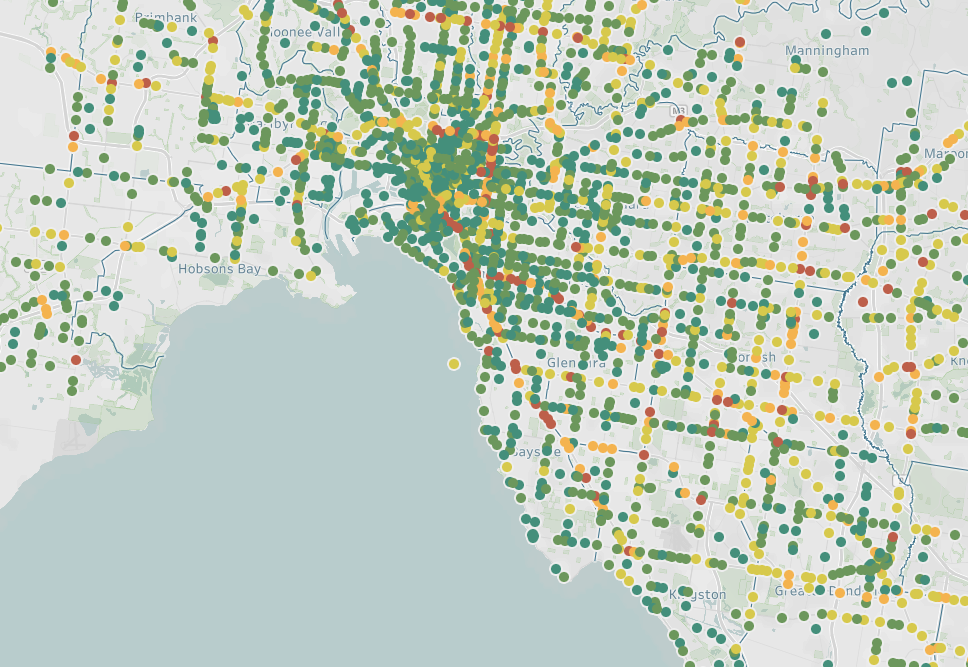Electric Vehicle charging network site identification and selection

Melbourne’s public access electronic vehicle (EV) charging network rollout is lagging behind peer cities and constraining the transition to a net-zero emissions transport system. JOLT is leveraging Department of Transport and Planning (DTP) Open Data to bring industry investment in public charging infrastructure to Victoria, making informed strategic decisions about charging site selection to improve transport equity and deliver a world-class customer experience.
Datasets used:
- Whole Fleet Vehicle Registration Snapshot by Postcode
- Traffic Signal Volume Data
Approximately 30% of suburban populations in Australia do not have access to at-home EV charging and depend on public charging infrastructure. Lack of public charging is therefore a key barrier to EV uptake and is constraining the transition to net-zero emission transportation systems.
JOLT is an Australian owned and operated EV charge point operator supporting an equitable transition to net-zero transport options by providing free, fast and clean public access fast charging to communities. JOLT has approximately 100 charging sites (2024) across Melbourne, Sydney, Adelaide and Brisbane metro areas, with plans to continue exponential network growth - including through existing partnerships with several Melbourne Local Government Areas (LGAs).
JOLT provides significant industry investment in public infrastructure, working with public and private sectors to install EV chargers that will best service community needs, now and as the transition to EV transport progresses.
JOLT’s rollout of DC fast chargers includes various analyses to support effective site identification and selection, ensuring world-class customer experience, long-term commercial viability, and improved transport equity outcomes – making zero emission transport modes more accessible for all members of society.
Utilising DTP Open Data datasets, JOLT has increased its business intelligence in site assessment, leading to efficiencies in feasibility workflows and acceleration of deployment, helping respond to growing demand and supporting local and state governments to achieve emissions reduction objectives.
DTP’s Whole Fleet Vehicle Registration Snapshot by Postcode dataset, has allowed JOLT to make more informed strategic decisions about site selection by focusing on areas that are seeing faster EV uptake than others, and also identifying areas that may need a catalyst. Having the time-series (quarterly) releases is critical in maintaining a continuous
pulse on uptake and understanding the growing urgency to act.
For example, by viewing the percentage of EV registrations against total fleet – the below map shows postcodes with comparatively higher proportions of EVs to non-EV vehicles registered in that postcode, showing a strong correlation with Melbourne’s inner and middle suburbs (darker green indicates higher incidence of EV registrations as a proportion of all vehicles, Q4 2023) and therefore higher priority areas for new charging sites. The granularity of data available, supports aggregation tailored to specific existing and prospective clients, like an LGA.

DTP’s Traffic Signal Volume Data is valuable for ensuring EV charging sites are fit for purpose and commercially viable, but also for supporting positive economic outcomes such as by reducing vehicle kilometres travelled, and mitigating congestion. By plotting traffic volumes at all SCATS sites, JOLT is able to view traffic desire lines on Melbourne’s road network at macro and granular levels. This enables sites to be chosen to best integrate with existing travel patterns, allowing people to charge in ways that suit their existing lifestyles i.e. not requiring dedicated (new) and/or longer trips to charge.
